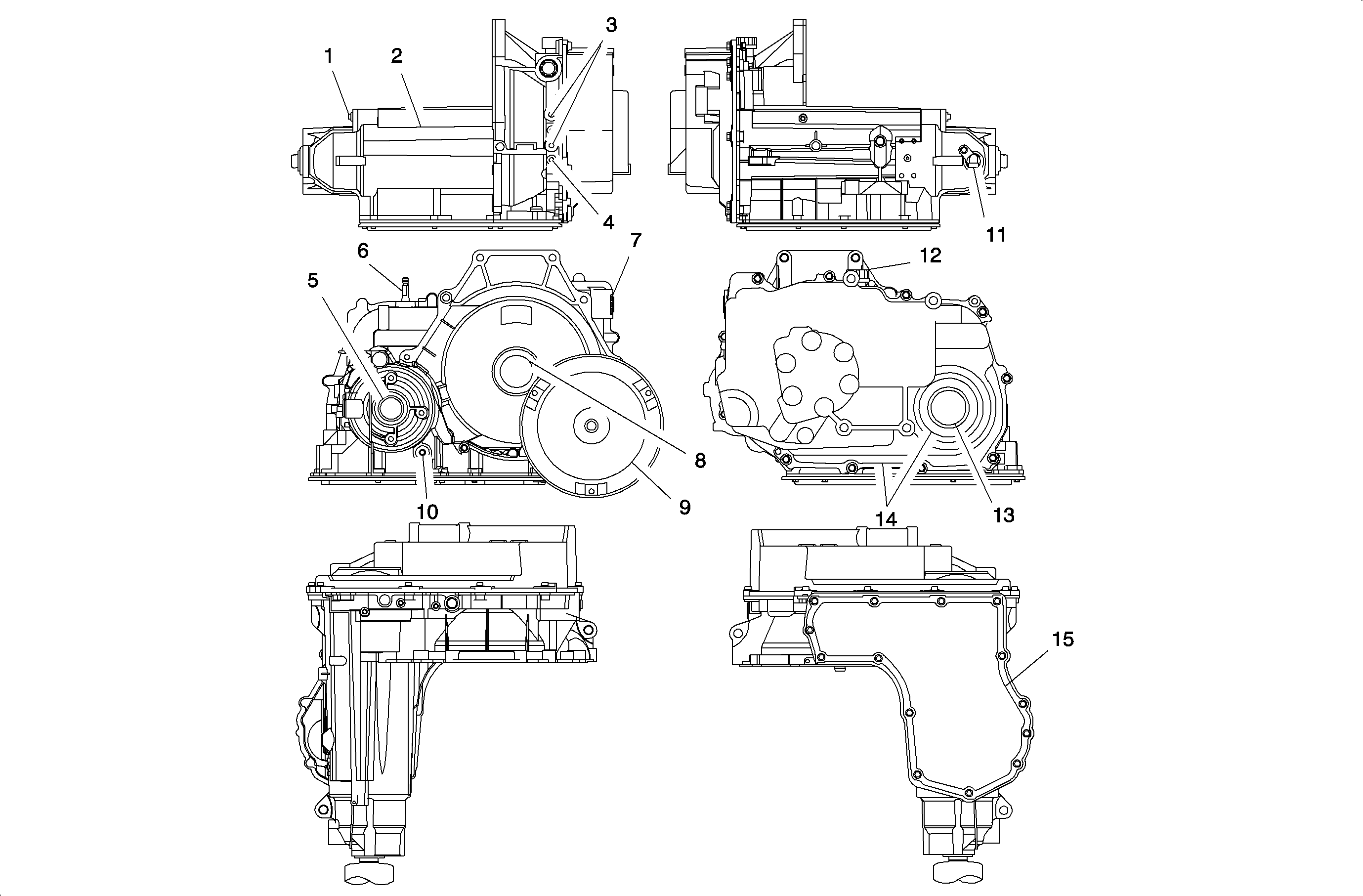Tools Required
SA9175NE Dye and Black Light Kit
Most fluid leaks can be located and repaired by visually finding the leak and
replacing or repairing the necessary parts. The following procedures may aid in finding
leaks.
Locating The Leak
- Identify the fluid. Determine whether it is engine oil, automatic transaxle
fluid, power steering fluid, etc.
- At what point is the fluid leaking from? After running the vehicle a minimum
of 15 miles to reach operating temperature, park the vehicle over a large sheet
of paper. The drippings on the paper should indicate the approximate location of leak.
- Visually check around the suspected component. Check around all gasket
mating surfaces for leaks. A mirror may be helpful inspecting the components that
are hard to see.
- If the leak still can not be found, it may be necessary to clean the suspected
area with a degreaser, steam, or spray solvent. Clean and dry the area well. Operate
the vehicle at normal operating temperature and varying speeds for several miles.
After operating the vehicle, inspect the suspected component. If the leak can not
be found, try the powder or black light and dye method.
Powder Method
- Clean the suspected area.
- Apply an aerosol-type powder, such as foot powder, to the suspected area.
- Operate the vehicle under normal operating conditions.
- Visually inspect the suspected component. You should be able to trace
the leak path over the powder to the leak.
Black Light and Dye Method
A SA9175NE
is available for
finding leaks. Refer to the manufacturer's directions when using the kit.
- Pour the specified amount of dye into the leaking component.
- Operate the vehicle under normal operating conditions.
- Direct the light towards the suspected component. The dyed fluid will
appear as a brightly colored path leading back to the leak.
Repairing the Fluid Leak
Once you have found the leak point, you must determine the cause of the leak.
Before attempting to repair the leak, check to be sure none of the following conditions
exist.
| • | The fasteners are not torqued to specification. |
| • | The fastener threads and fastener holes are dirty or corroded. |
| • | Gaskets, seals, or sleeves are misaligned, damaged, or worn. |
| • | Seal bores or gasket surfaces are damaged, warped, or scratched. |
| • | The manual shaft is nicked or damaged. |
| • | The bearing is a loose or worn causing excess seal or sleeve wear. |
| • | The case or component is porous. |
| • | The fluid level is too high. |
| • | A vent is plugged or a vent tube is damaged. |
| • | The fluid contains water or coolant. |
| • | The fluid drain back holes are plugged. |
Possible Points Of Oil Leaks

| - | The attaching bolts are not torqued correctly. |
| - | The gasket is damaged or is improperly installed. |
| - | The oil pan or mounting face is not flat. |
| - | The output shaft speed sensor seal is damaged (11). |
| - | The manual shaft seal is damaged (6). |
| - | The fittings on the oil cooler are loose or damaged. |
| - | The axle shaft seals are worn or damaged (5, 13). |
| - | The plug from the line pressure tap plug is loose (4). |
| - | The casting is porous (2). |
| - | Actuator guide seal (1) |
| - | Oil cooler line seals (3) |
| - | Pass-through connector seal (7) |
| - | Oil level control plug (10) |
| - | Side cover gaskets (14) |
| • | Leak from converter end |
| - | The converter seal is damaged (8). |
| • | The seal lip is cut. Check the converter hub for damage. |
| • | The bushing has been moved forward and is damaged. |
| • | A garter spring is missing from the seal. |
| - | The converter is leaking from a weld area (9). |
| - | A casting is porous in the case or pump. |
| - | Fluid may come out from the fill and vent cap (12). |
| - | If fluid appears milky, water or coolant may be in the fluid. |
| - | The drain back holes are plugged. |

